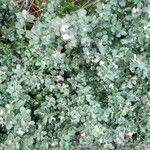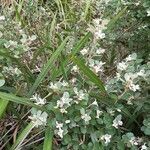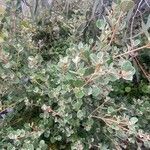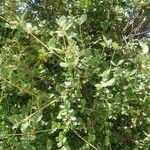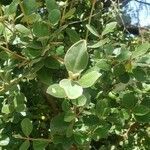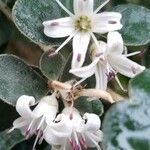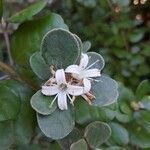An erect or spreading shrub. It grows 1.5 m high. It can spread 1-2.2 m wide. It has rusty-brown hairy small branches. The leaves are round or oval and hairy underneath. They are 3.5 cm long by 3 cm wide. The leaves are grey-green. The leaves occur in opposite pairs. It has white flowers and a short tube. There are 4 spreading petals. The flowers are about 1.5-2 cm across. Each flower produces about 4 seeds.
